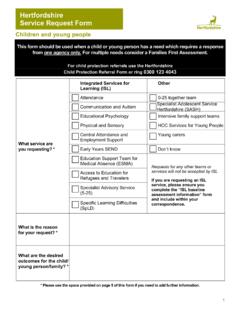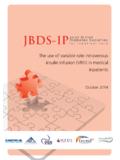Transcription of Kirkpatrick ˇs Evaluation Model
1 Kirkpatrick s Evaluation Model Donald Kirkpatrick 's 1975 book Evaluating Training Programs defined his originally published ideas of 1959, thereby further increasing awareness of them, so that his theory has now become arguably the most widely used and popular Model for the Evaluation of training and learning. Kirkpatrick 's four-level Model is now considered an industry standard across the HR and training communities. The four levels of training Evaluation Model were later redefined and updated in Kirkpatrick 's 1998 book, Evaluating Training Programs: The Four Levels. The four levels of Kirkpatrick 's Evaluation Model essentially measure: reaction of student - what they thought and felt about the training learning - the resulting increase in knowledge or capability behaviour - extent of behaviour and capability improvement and implementation/application results - the effects on the business or environment resulting from the trainee's performance All these measures are recommended for full and meaningful Evaluation of learning in organizations, although their application broadly increases in complexity, and usually cost, through the levels from level 1-4.
2 Level Evaluation type (what is measured) Evaluation description and characteristics examples of Evaluation tools and methods relevance and practicability 1 reaction reaction Evaluation is how the delegates felt about the training or learning experience eg., 'happy sheets', feedback forms also verbal reaction, post-training surveys or questionnaires quick and very easy to obtain not expensive to gather or to analyse 2 learning learning Evaluation is the measurement of the increase in knowledge - before and after typically assessments or tests before and after the training interview or observation can also be used relatively simple to set up.
3 Clear-cut for quantifiable skills less easy for complex learning 3 behaviour behaviour Evaluation is the extent of applied learning back on the job - implementation observation and interview over time are required to assess change, relevance of change, and sustainability of change measurement of behaviour change typically requires cooperation and skill of line-managers 4 results results Evaluation is the effect on the business or environment by the trainee measures are already in place via normal management systems and reporting - the challenge is to relate to the trainee individually not difficult; unlike whole organisation process must attribute clear accountabilities














